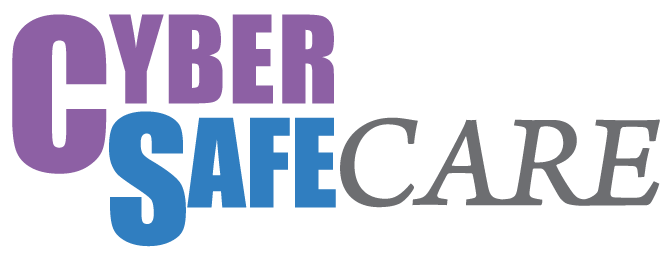 In 2018, Prince Edward Island's Public Schools Branch released its Safe and Caring Learning Environments Policy, which applies to the province's 56 English-language public schools and the more than 19,000 students attending kindergarten through grade 12, their parents, caregivers, and educators.
In 2018, Prince Edward Island's Public Schools Branch released its Safe and Caring Learning Environments Policy, which applies to the province's 56 English-language public schools and the more than 19,000 students attending kindergarten through grade 12, their parents, caregivers, and educators.
The policy ensures that the Public Schools Branch provides a safe environment for its students and staff and addresses cyberbullying.
The Safe and Caring Learning Environments Policy is broken into the operational policy, the operational procedure, and the incident response guide. In 2019, the Public Schools Branch enacted its Digital Citizenship and Technology in Schools policy, which outlines regulations for its schools around the use of communications and technology, and doing so in a respectful manner.
Individual schools may have further in-house policies regarding cyberbullying, technology use and digital citizenship. To find out more information on the policies of your kid's schools, visit the school website or contact the school. Further resources are offered in the Getting Help section.
Public Schools Branch Policies
Digital Citizenship and Technology in Schools
The goal of the Public Schools Branch’s Digital Citizenship and Technology in Schools Policy is to ensure that the use of communication and information technology (CIT) contributes to positive learning and working environments with the Public Schools Branch. It also ensures users are aware that they are accountable to use CIT in a meaningful, responsible and respectful manner. The policy applies to students within the Public Schools Branch, its employees, and supported by government and the schools branch (Public Schools Branch).
Safe and Caring Learning Environments Policy
The purpose of the Safe and Caring Learning Environments Policy is to create and maintain a safe, caring, respectful and inclusive climate for learning and working, while promoting a shared responsibility among member of the school community – staff, students, parents/guardians and volunteers – to create and maintain a positive school climate. Through the policy, the Public Schools Branch is committed to prevent and intervene to address bullying/harassment (including cyberbullying), discrimination, violence, abuse of any kind, and any behavior that has a negative impact on school climate. A response to student behaviours will take into account the following: student’s age; student’s history; student’s ability to be accountable for their behavior; student’s ability to control their behavior; and the student’s ability to understand the consequences of their actions. According to the Education Act, the Public Schools Branch is responsible for ensuring each student and staff member has a welcoming, caring, respectful and safe learning environment that respects diversity and fosters a sense of belonging. (Public Schools Branch)
Safe and Caring Learning Environments Operational Procedure
The Public Schools Branch, within the procedure, has implemented measures to promote a positive school climate, support a safe and caring learning and working environment, and deal with harmful behaviours that impact learning and working environments. The measures include: development of a Code of Conduct by each school; raising awareness of expectations around student, parent, teacher and principle responsibilities in accordance to the Education Act; establishment and/or support of programs, initiatives and services that support emotional well-being, positive behavior and violence prevention; support disciplinary approaches and practices such as progressive discipline to promote learning, positive changes in behaviour and accountability; and establish procedures that explain how to respond to harmful behaviours that impact school climate, and how to respond to such incidents. (Public Schools Branch)
Safe and Caring Learning Environments Incident Response Guide
The Public Schools Branch, under its Safe and Caring Learning Environments Policy, has developed an incident responses protocol. It outlines student to student or staff responses and staff to student responses for the following incidents: bullying or harassment (including cyberbullying); discrimination; threat; verbal abuse; sexual misconduct; theft or vandalism; violence; and weapons. The one-page PDF outline the direction on responding to situations where there is a concern or complaint (Public Schools Branch).
Schools, School Branches, Education Department
List of Prince Edward Island Schools/websites
Within the Safe and Care Learning Environments Policy each school with the Public Schools Branch was directed to develop its own Code of Conduct. To learn if your school has its own Code of Conduct, or to contact your school, visit the list to be directed to your school's website. (PEI Department of Education and Lifelong Learning).
Public Schools Branch
The Public Schools Branch encompasses the 56 English-language schools in the province, and the more than 14,000 students who attend those schools.
La Commission scolaire de langue francaise (French Language School Board)
La Commission scolaire de langue francaise is an Acadian and Francophone collective that offers French-language education to students with the focus on promoting and developing its language and culture.
Department of Education and Lifelong Learning
The Department of Education and Lifelong Learning develops and delivers programs and curriculum in English and French to Island children from birth to grade 12 (Government of Prince Edward Island).
Student Well-Being Teams
Student well-being teams work in PEI schools advising, consulting, and provide service to children and youth struggling with mental, social, and physical health issues (Department of Education and Lifelong Learning)
PEI Post-Secondary Policies
Policies and Procedures - University of Prince Edward Island
The official non-academic policies approved by the Board of Governors of UPEI. Associated procedures also appear.
